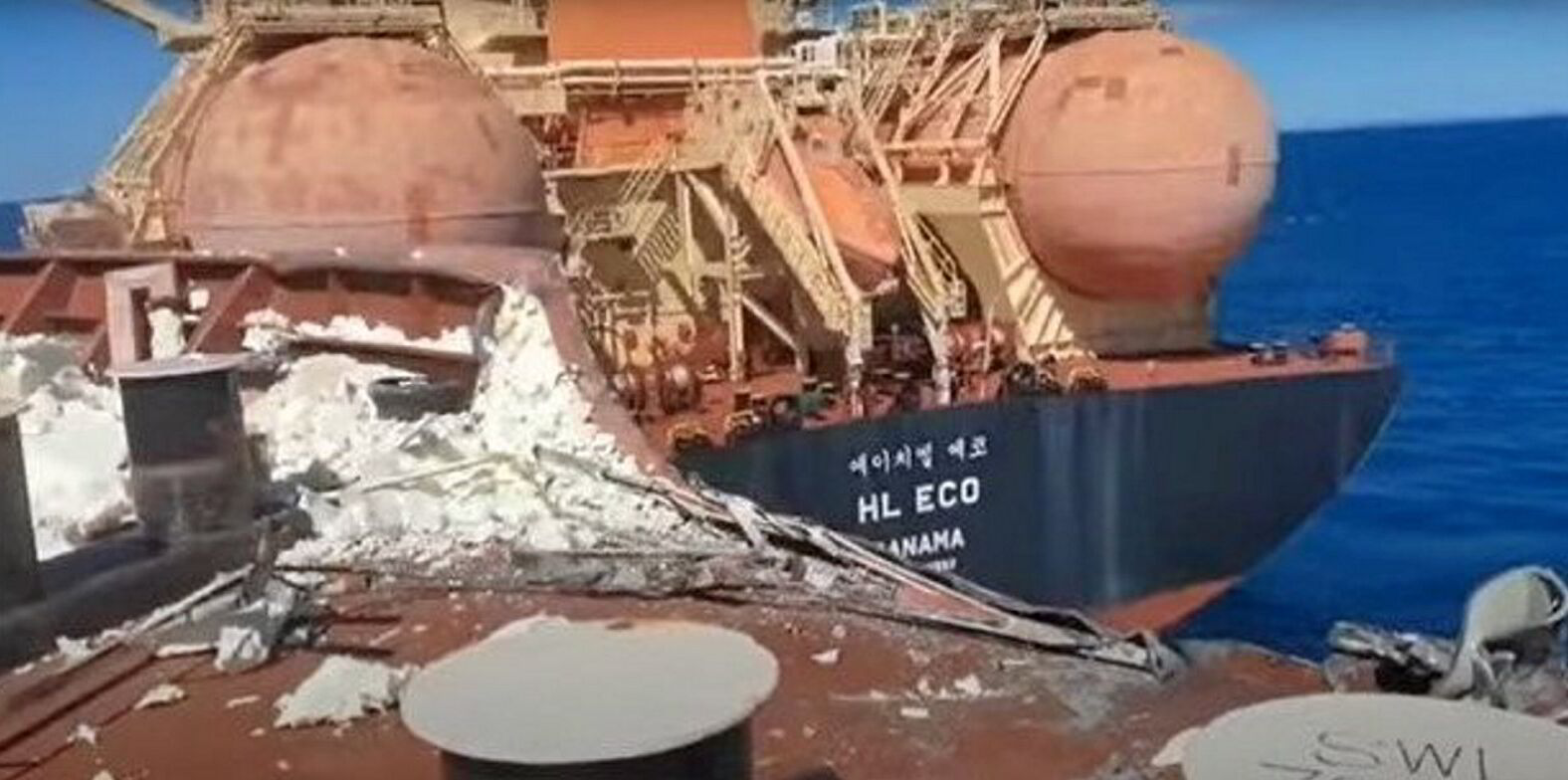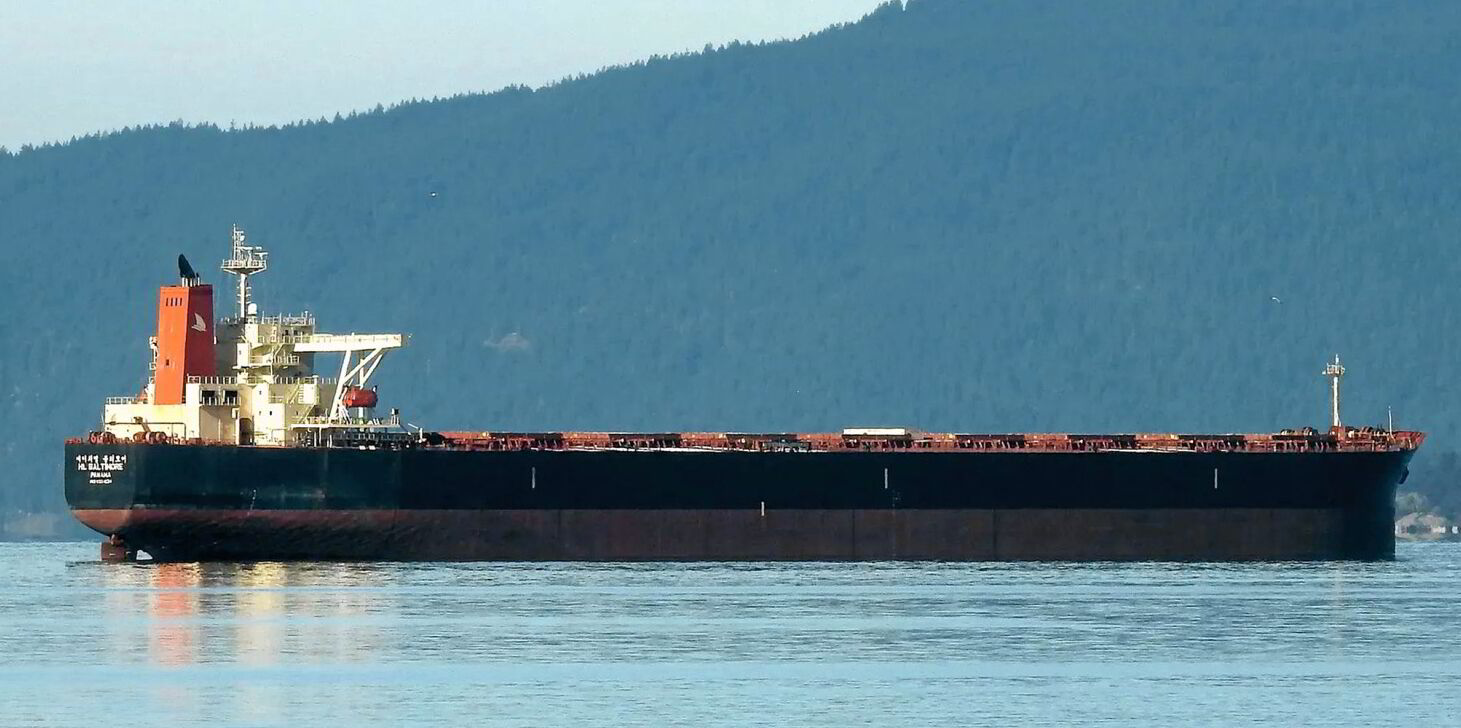The portside type-C LNG bunker tank on board an H-Line-owned capesize bulk carrier was cut open in a collision with another vessel in an incident that occurred earlier this month.
A video posted on LinkedIn and YouTube shows the 179,070-dwt HL Eco (built 2020) anchoring at Hay Point in Queensland, Australia.
The ship is described as having lost power, resulting in a collision with another bulker, the Japanese-controlled 181,458-dwt YM Serenity (ex-Lowlands Serenity, built 2011), which was at anchor.
The HL Eco appears to have suffered damage to its aft port area and specifically one of its two rear-mounted type-C LNG bunker tanks.
What appears to be insulation material from the LNG bunker tank can be seen strewed on the bow of the YM Serenity at the point where the two vessels collided.
As yet, there has been no information as to whether any LNG leaked from the tank.
Both capesizes were in ballast at the time. The YM Serenity later moved to an outer anchorage.
TradeWinds has tried to contact H-Line and the local Australian authorities for more details about the collision.
The incident, which is reported to have occurred around midday local time on 16 July, is likely to raise questions on the positioning of LNG bunker tanks and the materials from which they are constructed.
It comes at a time when the number of newbuildings being ordered as LNG dual-fuel vessels is rising.
The HL Eco is listed as operated by Korean steel giant Posco. Kpler data currently shows the vessel in ballast and heading for China.
The vessel’s owner, H-Line, was one of the first shipowners to have invested in LNG dual-fuel bulk carriers.
In 2018, the company signed up for two 180,000-dwt capesizes at then-Hyundai Samho Heavy Industries, one of which was the HL Eco. It doubled the order to four newbuildings a year later. (Copyright)




